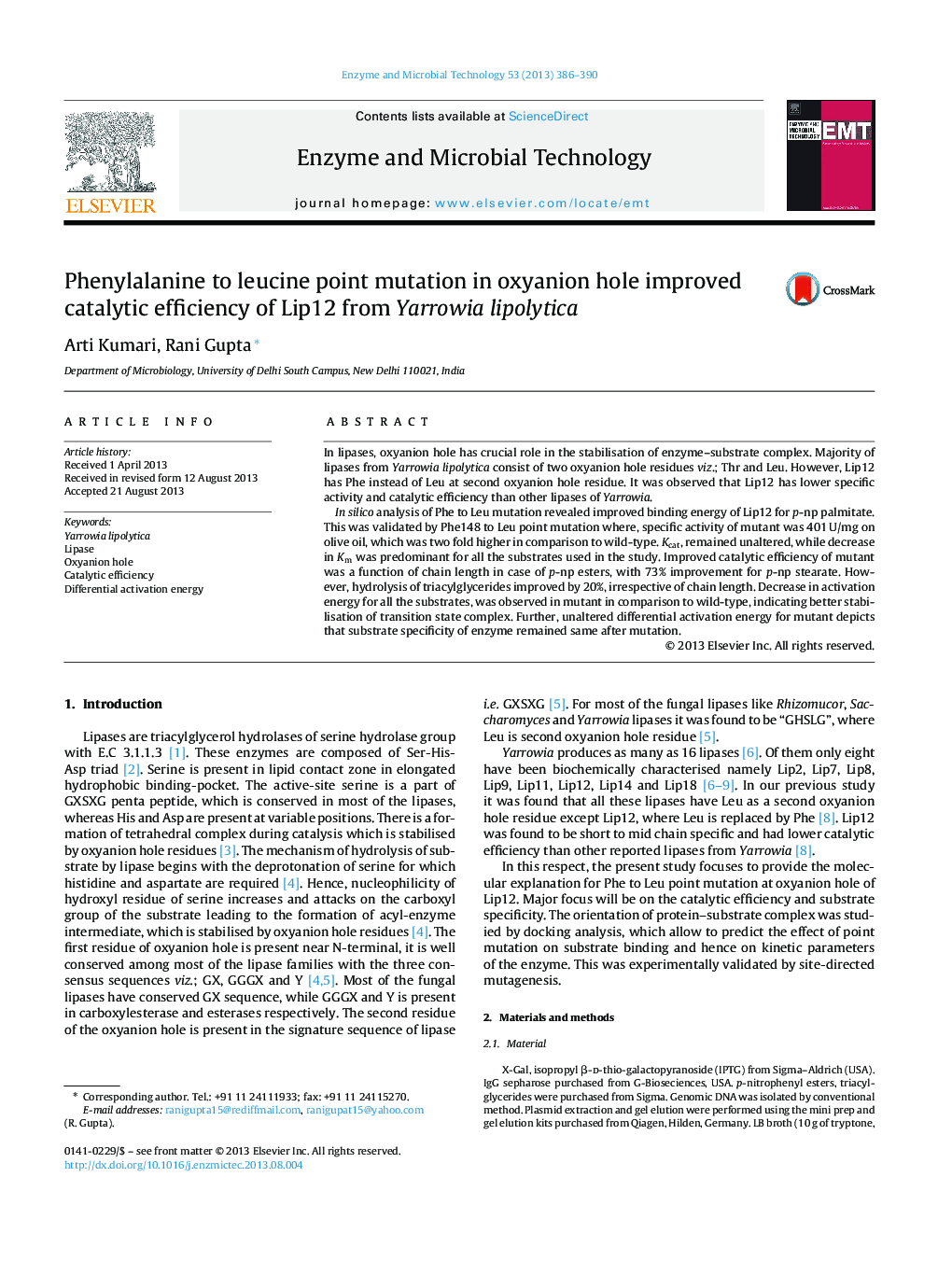| Article ID | Journal | Published Year | Pages | File Type |
|---|---|---|---|---|
| 17068 | Enzyme and Microbial Technology | 2013 | 5 Pages |
•F148L mutation of Lip12 from Y. lipotlytica lead to improved catalytic efficiency.•F148L mutant showed lowered activation energy compared to wild protein.•There was no change in substrate specificity after mutation.
In lipases, oxyanion hole has crucial role in the stabilisation of enzyme–substrate complex. Majority of lipases from Yarrowia lipolytica consist of two oxyanion hole residues viz.; Thr and Leu. However, Lip12 has Phe instead of Leu at second oxyanion hole residue. It was observed that Lip12 has lower specific activity and catalytic efficiency than other lipases of Yarrowia.In silico analysis of Phe to Leu mutation revealed improved binding energy of Lip12 for p-np palmitate. This was validated by Phe148 to Leu point mutation where, specific activity of mutant was 401 U/mg on olive oil, which was two fold higher in comparison to wild-type. Kcat, remained unaltered, while decrease in Km was predominant for all the substrates used in the study. Improved catalytic efficiency of mutant was a function of chain length in case of p-np esters, with 73% improvement for p-np stearate. However, hydrolysis of triacylglycerides improved by 20%, irrespective of chain length. Decrease in activation energy for all the substrates, was observed in mutant in comparison to wild-type, indicating better stabilisation of transition state complex. Further, unaltered differential activation energy for mutant depicts that substrate specificity of enzyme remained same after mutation.
